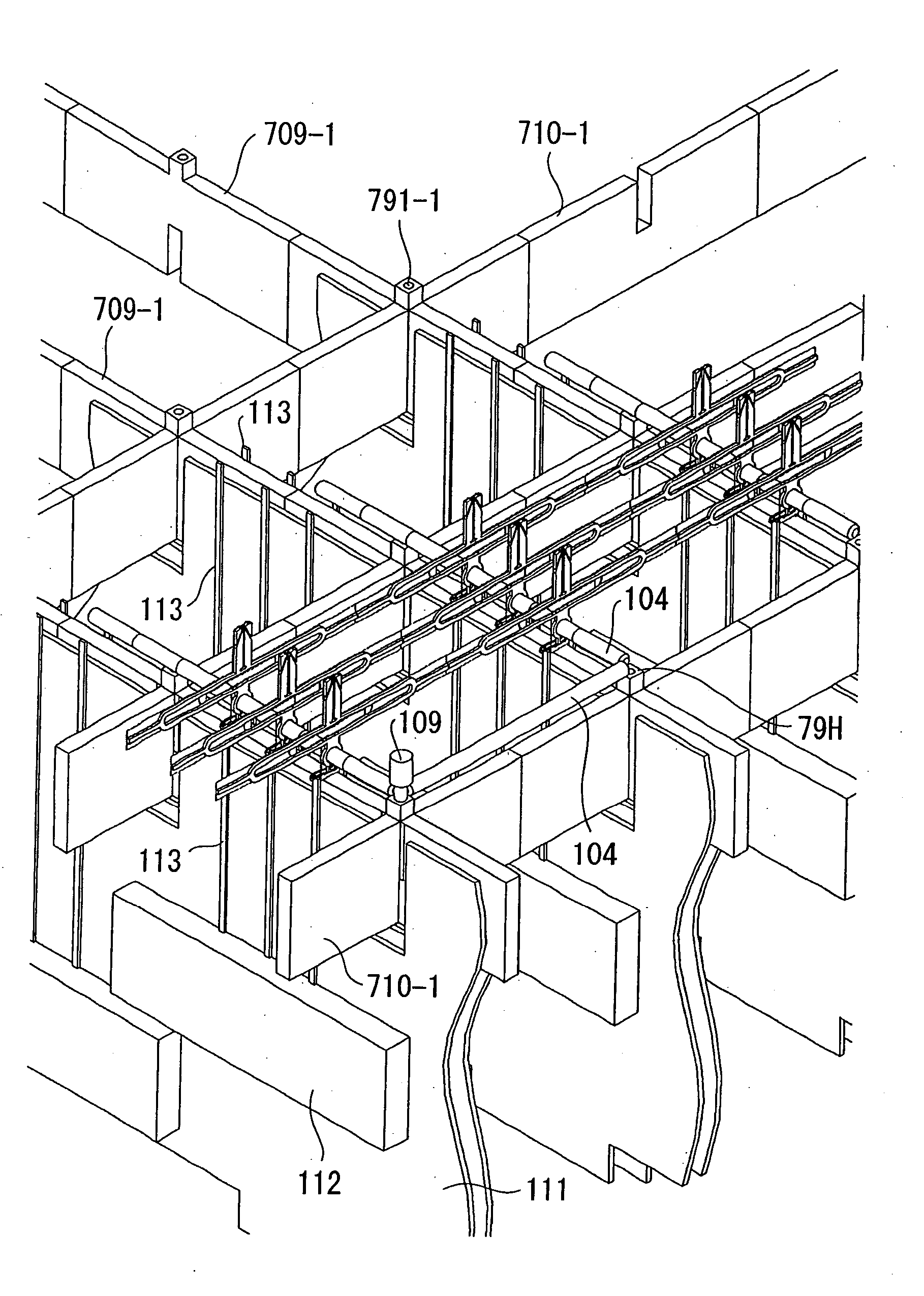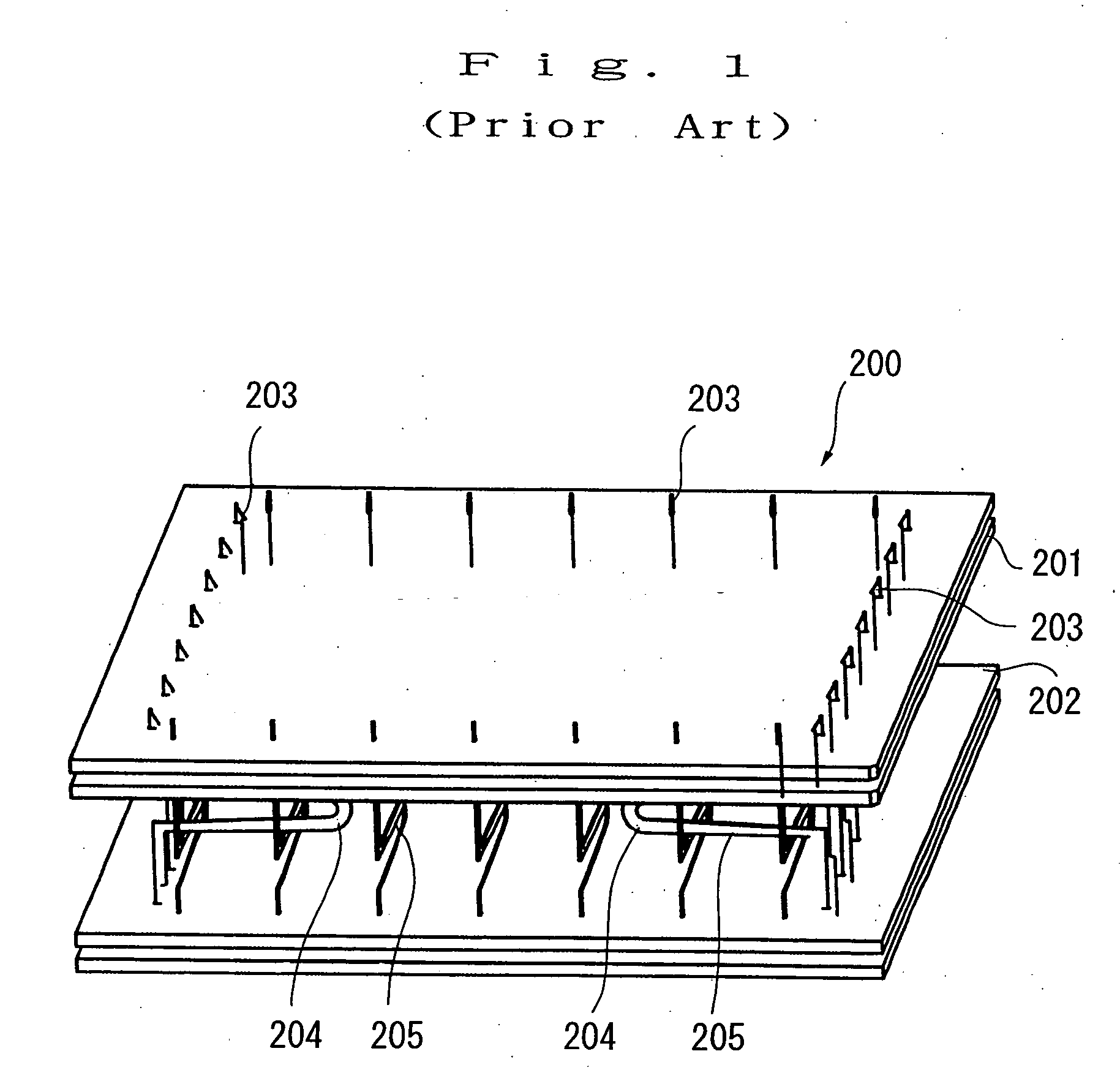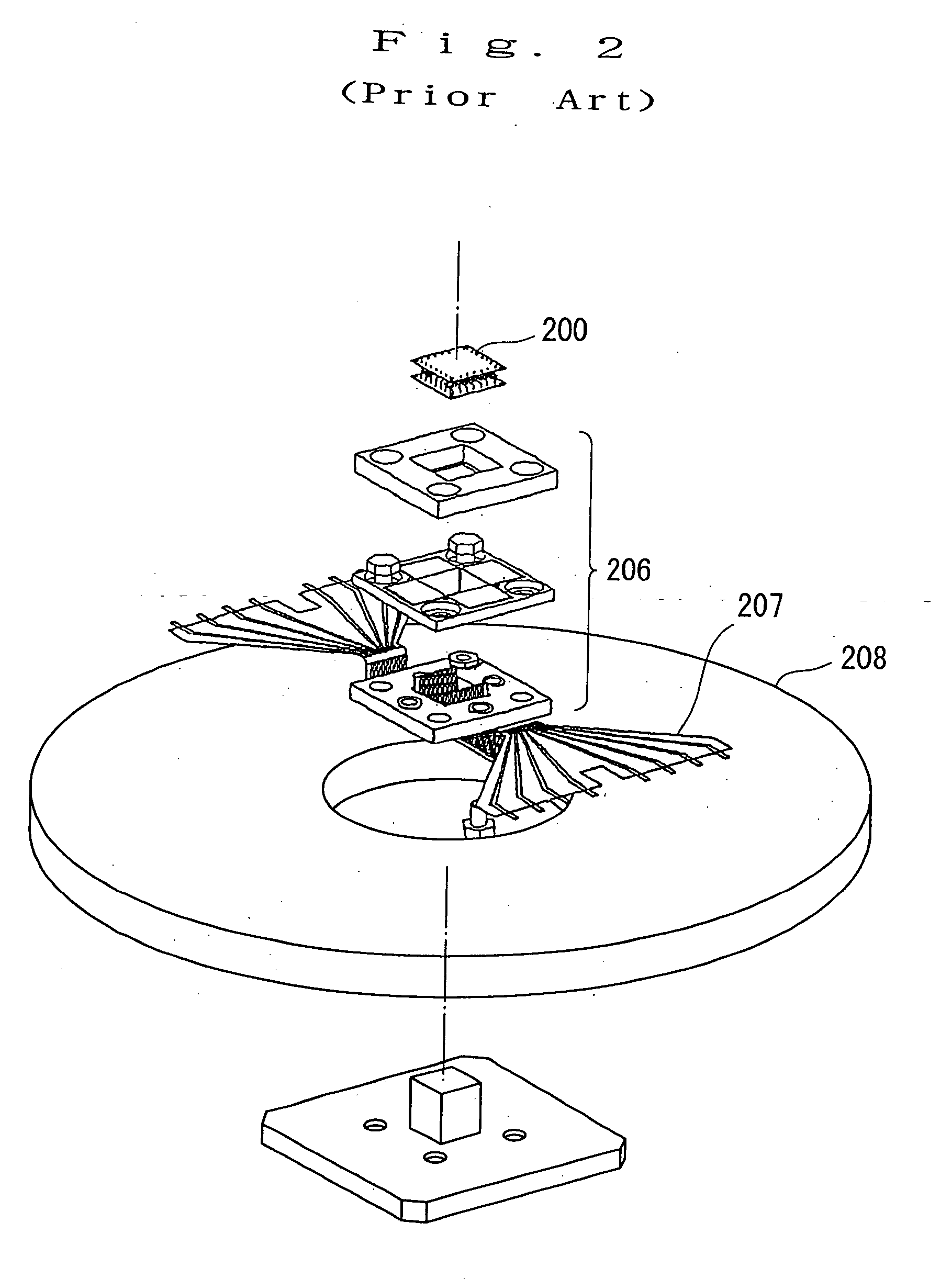Electric signal connecting device and probe assembly and probing device using the same
a technology of connecting device and probe, which is applied in the direction of individual semiconductor device testing, semiconductor/solid-state device testing/measurement, instruments, etc., can solve the problems of falling measurement yield, difficulty in controlling contact pressure to a constant level, and difficulty in satisfying the area occupied by circuit terminals and wiring widths, so as to simplify the drawing of wiring and the connection terminal structure
- Summary
- Abstract
- Description
- Claims
- Application Information
AI Technical Summary
Benefits of technology
Problems solved by technology
Method used
Image
Examples
embodiment 1
[0099] The following is a detailed description of Embodiment 1 of the probing device of the present invention with reference to drawings. The present embodiment 1 is an effective system when it is applied to the current system shown in FIG. 3, and the integration of wiring lines with probes eliminates the necessity of expensive multilayered board and the like of the prior probe card.
[0100]FIG. 5 is a perspective view showing Embodiment 1 of a multiple array vertical probe assembly according to the present invention. The basic structure of the multiple array vertical probe assembly according to the present Embodiment 1 is made up by combining in the grid form a unit in the X direction 5 formed by arranging in the vertical direction a plurality of ribbon-shaped films in the X direction 1 on which a plurality of vertical probes 3 patterned by etching in the longitudinal direction, and, like this unit in the X direction 5, a unit in the Y direction 6 formed by arranging in the vertical...
embodiment 2
[0110]FIG. 6 is a partial perspective view describing the structure of the probing device according to Embodiment 2 of the present invention. Embodiment 2 of the present invention is characterized in that the acting point of contact pressure and the supporting parts subjected to this contact pressure are in the ending position of the curved parts regardless of the number of arrays of multiple arrays and the number of wiring lines, and a good spring characteristic of probes can be obtained. It is also characterized in that the wiring part is behind the supporting part and is unlikely to be affected by the resiliency property of probes, a sufficient space available for electric wiring can be secured, and wiring pattern forms sufficiently taking into account electric property can be obtained. And the probing device using the multiple array vertical probe assembly of the present Embodiment 2 is not constituted by arranging individual probe assemblies in the matrix pattern as in the past...
embodiment 3
[0132] The following is a detailed description of the Embodiment 3 of the present invention with reference to drawings. FIG. 16 is a front view showing an example of the ribbon-shaped film according to the Embodiment 3 of the present invention. The Embodiment 3 of the present invention takes care to drastically simplify the structure of the ribbon-shaped film in the X direction or the ribbon-shaped film in the Y direction. Specifically, in the present Embodiment 3, the film material of the ribbon-shaped film 65 is curtailed to the limit and the ribbon-shaped film 65 consists of a first connecting member 67a connecting a vertical probe pair 66 consisting of a pair of vertical probes mutually facing each other 66a and 66b, a second connecting member 67b connecting another vertical probe 66c positioned behind a vertical probe (for example 66a) and wiring lines 68 extending downward from the vertical probes 66a, 66b and 66c. The wiring lines 68 form openings 69 by bending at a predeterm...
PUM
 Login to View More
Login to View More Abstract
Description
Claims
Application Information
 Login to View More
Login to View More - R&D
- Intellectual Property
- Life Sciences
- Materials
- Tech Scout
- Unparalleled Data Quality
- Higher Quality Content
- 60% Fewer Hallucinations
Browse by: Latest US Patents, China's latest patents, Technical Efficacy Thesaurus, Application Domain, Technology Topic, Popular Technical Reports.
© 2025 PatSnap. All rights reserved.Legal|Privacy policy|Modern Slavery Act Transparency Statement|Sitemap|About US| Contact US: help@patsnap.com



